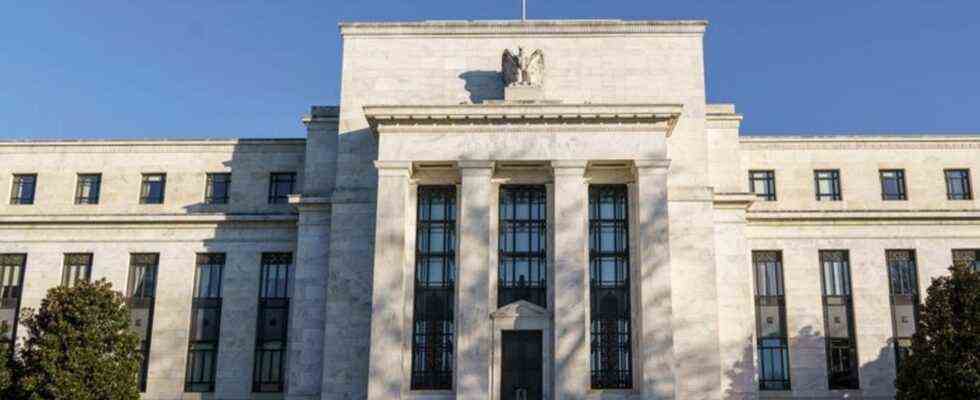Monetary policy
US Federal Reserve before tightening loose monetary policy
The Federal Reserve (Fed) building. Given the robust economic development and high inflation rate, the US Federal Reserve (Fed) is advising on tightening its monetary policy. Photo: J. Scott Applewhite / AP / dpa
© dpa-infocom GmbH
After its enormous aid programs in the Corona crisis, the US Federal Reserve wants to start tightening its monetary policy. A first step would be to curb their bond purchases to support the economy.
In the US, with relatively high inflation and solid economic growth, the gradual exit from ultra-loose monetary policy is about to begin.
Experts expect the Federal Reserve (Fed) to announce a curb on its multi-billion dollar asset purchases on Wednesday (7:00 p.m. CET). In contrast, the key interest rate, which is in the extremely low range of 0.0 to 0.25 percent, is unlikely to change for the time being. The financial markets are eagerly awaiting how the monetary authorities will comment on the unusually high rate of inflation.
The Fed is currently buying around $ 80 billion in government bonds and $ 40 billion worth of mortgage-backed securities a month. The program aims to improve the liquidity of the financial markets and facilitate the provision of credit for households and companies. Federal Reserve Chairman Jerome Powell again signaled the end of the program at the end of October. “We are well on the way to start reducing our bond purchases,” he said. The so-called tapering should be completed by the middle of next year if the economy develops roughly as expected.
Raising the key interest rate is not an issue
The Fed reacted to the corona crisis with an extreme easing of its monetary policy in order to support the economy and labor market of the world’s largest economy. Curbing bond purchases would be the first step towards tightening the reins of monetary policy. A hike in key interest rates is not yet considered an acute issue, but the rapid rise in inflation is also increasing the pressure on the Fed here. Any signals about the timing of possible interest rate hikes should attract a lot of attention from investors. Most recently, hedge fund manager Bill Ackman called on the Fed to act quickly.
The US economy has actually recovered well from the crisis. In the summer months, however, growth lost significant momentum due to supply bottlenecks in the industry and the increasing number of corona cases. The unemployment rate fell to 4.8 percent in September – although it did not improve as quickly as the government had hoped. Meanwhile, employers in many industries are already complaining about a shortage of applicants. Before the pandemic, the unemployment rate was 3.5 percent – the lowest level in decades.
The central bank is likely to be more concerned about rising inflation risks. The persistent supply problems in world trade meanwhile increasingly indicate that the significantly increased inflation is not – as initially assumed by the Fed – a relatively quickly temporary phenomenon. Powell admitted that himself in late October. The global bottlenecks in the supply chain, which would have led to increased inflation, “will probably take longer than previously expected, possibly well into next year,” said the central bank chairman at the time.

